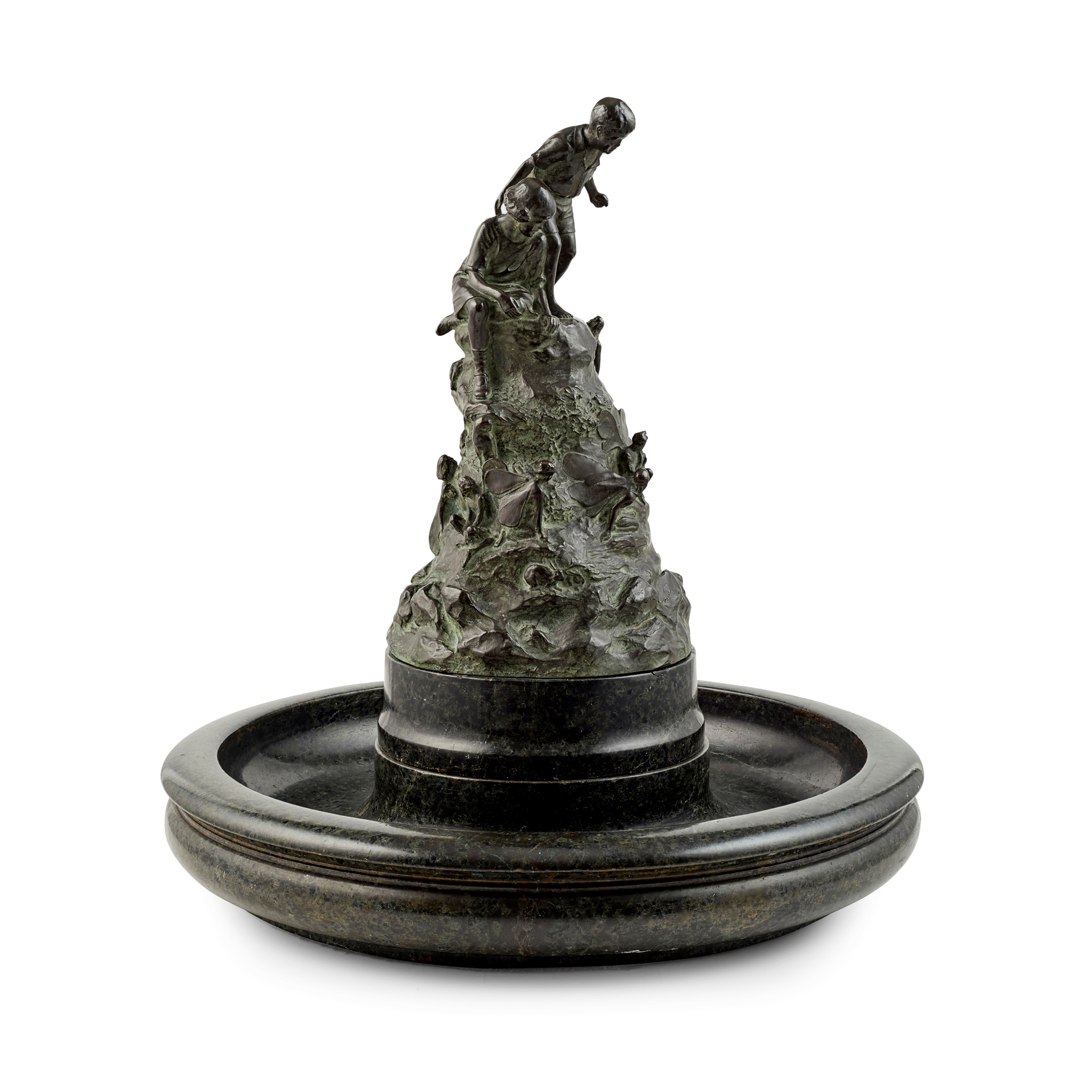THOMAS J. CLAPPERTON (1879-1962)
'WONDERLAND', CIRCA 1926
£6,875
Auction: 1 April 2020 at 11:00 BST
Description
bronze, with revolving socket on a dished marble base, signed in the bronze THOS. J. CLAPPERTON
Dimensions
bronze 31cm high, marble base 12.3cm high, 43cm diameter
Footnote
Image ref: 1/4-055813-G. Alexander Turnbull Library, Wellington, New Zealand.
Note: Regarded as ‘The Border Sculptor’, Thomas Clapperton initially trained at the Glasgow School of Art, before becoming apprentice to Sir William Goscombe John, one of the most eminent sculptors of the period. After much time studying in Paris and Rome, Clapperton eventually settled in London and setup a sculptor's studio in Chelsea. Although his sculpture of Robert the Bruce at Edinburgh Castle is renowned, the sculptor’s skilful execution of numerous war memorials are also highly regarded. In the immediate aftermath of the First World War, the nation was in mourning and anxious to reflect; Clapperton’s sympathetic and emotive treatment of the subject won him several commissions at this early stage in his career, including those from as far afield as New Zealand. During an official visit to the UK, mayor Robert Milligan was charmed by Sir George Frampton’s portrayal of Peter Pan in Kensington Gardens, now an iconic homage to J. M. Barrie’s novel of the same name. Following this, he reached out to Clapperton for two commissions: one for the North Otago War Memorial; and the other for ‘Wonderland’. Initially, the mayor’s request was to produce a direct replica of Frampton’s Pan, however Clapperton felt copying the work of his contemporary would not be appropriate so instead agreed to produce a similar bronze, drawing inspiration from the piece.
The influence from Frampton’s Pan are clear in ‘Wonderland’: a conical base with mystical fairies, pixies and woodland creatures perching amongst the naturalistic rockery; the charming innocence of the figures in search of adventure. Clapperton however, opts for a more dynamic rendition of the piece, as the figures interact with the wonderland they have just discovered below them. The girl, perhaps a representation of J.M. Barrie’s Wendy, sits on the edge of the rock face and delights in the fantasy world below. The boy, eagerly peering over the edge, is about to be drawn in to the dreamlike world by one fairy, reaching out to touch the tip of his foot, as if inviting the children into Wonderland. Upon its completion in 1926, Robert Milligan gifted the piece to the children of Oamaru, New Zealand, where it still stands today in the Wonderland Garden. The finished bronze, of which this is a reduction, marks Clapperton’s diversity as a sculptor, stepping away from sombre memorial compositions to stir up fond memories of the joys of childhood.

